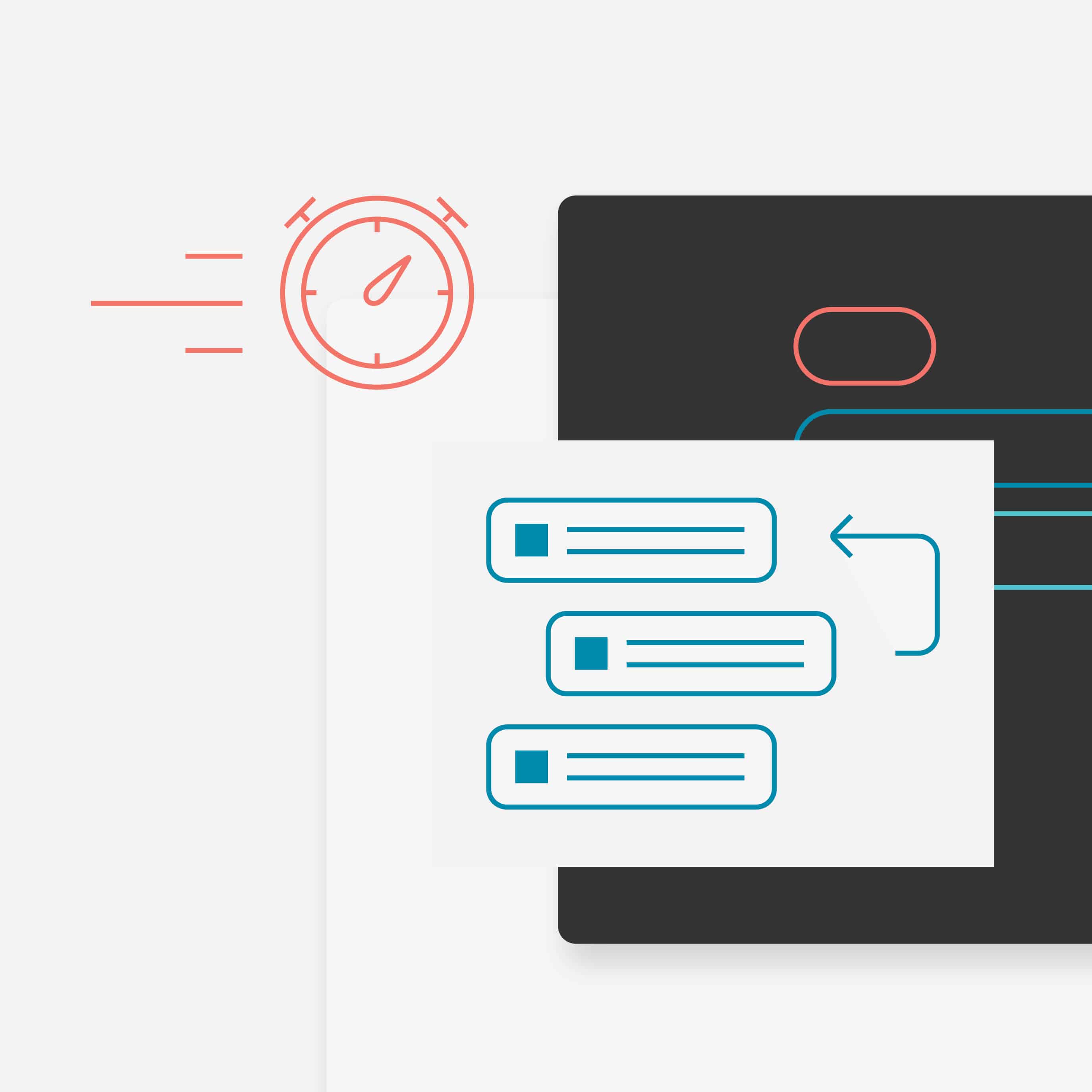Organizational agility isn’t just a fad or a buzzword floating around the business community. It’s a strategic mindset shift that dictates rapid processes and product development cycles. Organizational agility empowers teams to work towards their full potential.
There’s data to back that claim: Research from McKinsey reveals organizations that successfully complete agile transformations can improve their financial performance by 20-30%.
So what does it take to turn your company into an agile organization?
Becoming an agile organization starts with a mindset shift. You have to move away from the legacy ideals of the business as a well-oiled machine. That paradigm doesn’t leave room for flexibility, creativity or innovation. Instead, you need to see your organization for what it really is: A living organism composed of talented, driven individuals.
Here’s how to create an agile organization to truly tap into the power and potential of your people.
What Is an Agile Organization?
Capital “A” Agile practices refer to the scrum masters and product teams of tech companies. But many businesses have borrowed and adapted those processes into broader, more agile ways of working.
Agile organizations are responsive to change. There are no legacy processes in an agile organization: They practice continuous improvement by constantly sourcing new ideas and innovations from employees to optimize their products, services, and business processes.
Agile organizations relentlessly pursue customer satisfaction. But doing that requires empowered employees. You can’t support customers from an ivory tower. Employees on the frontline are the ones who know most about your customers and their changing needs, so they need to be empowered to pioneer new programs.
Agile organizations flatten their organizational structure to support employee empowerment. Agile organizations communicate the business strategy with employees so they can set their own goals each quarter. By understanding the company’s priorities, employees are enabled to think strategically.
3 Benefits of an Agile Organization
Agile organizations develop significant competitive advantages over their peers. From business to operations to human resources, agility confers several benefits.
Quicker Response to Market Changes
As customer needs change, agile organizations change with them. Instead of spending months on market research and development only to miss the moment, agile organizations take an iterative approach that allows them to fail quickly until they refine and optimize their ideas to meet customer needs.
This can result in developing new products and moving into new markets ahead of their competition.
Improved Operational Efficiency
Agile organizations are more productive than organizations that haven’t undergone an agile transformation. Because they believe in failing quickly, agile organizations are constantly progressing and refining their processes.
This allows them to become as efficient and productive as possible. And since employees are empowered to think strategically and act on their ideas, they become more motivated to succeed and bring the business along with them.
Increased Employee Engagement
Employees in agile organizations feel closer to the company’s mission and purpose. They understand the company’s strategic goals and feel aligned with and oriented towards them. They clearly see their own role in the bigger picture, and that improves their motivation and engagement. Agile workforces are more likely to stay and grow within the company long-term.
How Do You Create an Agile Organization?
Clearly, adopting agility brings significant advantages. So what does it take to initiate an agile transformation at your organization?
There are two centers of an organization’s agile transformation: your people and your working environment.
Agile Teams
Empowering flexible, agile teams is a vital starting point for agile transformation. Your people are your differentiator and the most powerful resource for improving agility. To unleash their potential, you need to give them permission to iterate and innovate.
In agile organizations, teams work with their supervisors to set goals that drive the business forward. Team members are given the ability to quickly experiment with processes, products, and services. Even if their experiments aren’t successful, team members track what they learn about why it failed and use that knowledge to inform future iterations.
Your organization might require structural renovation to enable agile teams. Creating flexible teams that work cross-functionally prevents silos and exposes each employee to other roles throughout the company. This helps them understand their own role in the larger picture better and allows them to see possibilities for internal mobility. To thrive in an agile organization, supervisors must learn how to nurture high-performance teams.
Ideally, flex teams bring together different stakeholders to serve all the needs of a project. You might have an HR representative on a newly formed product development team, for example, to help advise on and optimize people processes as they get to know each other. Once team members are working effectively together and moving further into development, they might bring someone from finance or supply management to help advise their progress.
Flex teams bring together the best people to work quickly and efficiently.
Agile Working Environments
Agile working environments are vital to empowering agility across the company. This applies to both physical and digital workspaces. (Ideally, agile companies embrace hybrid work to give employees the greatest flexibility to choose when, where, and how they work.)
Agile offices are set up more like coworking spaces than a traditional designated office. The goal is to have a physical environment that individuals come to so they can collaborate and learn from each other.
The digital working environment must also support flexibility. For example, teams should be empowered to set their own guidelines for communication.
Transparency is essential in an agile work environment. A comprehensive goal alignment software supports transparency by allowing employees to see what the business and individual leaders’ priorities are. This transparent software also has the benefit of making leadership accountable, since it enables employees to see how decisions are made and even, to varying degrees, participate.
How to Develop an Agile Mindset in Your Organization
The biggest challenge when implementing an agile transformation is embracing a top to bottom mindset shift. Here are four key differences between a traditional business mindset and an agile one.
Progress Over Perfection
First, the agile mindset values progress over perfection. It’s better to move something forward imperfectly than to miss the moment altogether because you were tied up in endless meetings trying to reach perfection.
Agile organizations have a better opportunity to improve continually since they implement and test ideas and use the results to refine future efforts.
Adapt to Change Over Following a Plan
Agile organizations prioritize adapting to change over following a plan. Plans are important, but your long-term strategy shouldn’t be wed to them. Playbooks are a better model: You have a series of plays that you know have worked in the past, but flexibility in deploying them as circumstances change.
This doesn’t mean that you can’t set a strategy, just that you need to revisit and revise it frequently (at least once per quarter) to make sure everything is still aligned with evolving business needs.
Participation Over Power
Agile leaders value participation over preserving their own power. Agile organizations have a flat structure, and power is more evenly distributed across the workforce. It isn’t concentrated in the C-suite, as with traditional business models.
Having the workforce serve customer needs and drive the business forward is always leadership’s top priority.
Autonomy Over Control
Agile organizations value employee autonomy over leadership control. Employees in agile organizations are empowered to take control over their own performance and professional development, rather than have those factors be controlled by company leaders.
That autonomy supports a greater sense of ownership over strategic priorities and purpose within the company.
What Should an Agile Organization Track?
Agile organizations are, by their very nature, responsive to both internal and external factors. They can upset their business plan and/or provide new opportunities to expand and improve. Here are some of the factors that agile organizations track regularly to help inform their next moves.
- State of the talent market. Agile organizations should keep tabs on labor market changes so they can quickly develop new training or L&D programs to upskill existing talent in a tight market or implement new HR programs or technology to identify the best candidates among seemingly overwhelming amounts of applications.
- Best practices. Agile companies stay up-to-date on what’s working best right now. Remaining competitive depends on changing to keep up with or surpass other companies.
- Market trends. Agile companies aren’t just passively tracking trends, but communicating these trends to the workforce and collecting their ideas and innovations for leveraging the changes.
- Competitors. Agile organizations are attuned to what their competitors are doing, in particular how they’re attracting and retaining talent and which markets they’re moving into. By tracking these factors, agile organizations are able to remain competitive while differentiating their employer brand and employee experience.
- High-potential employees. The biggest internal factor agile organizations track is their people. Agile companies are constantly on the lookout for their next leadership candidates. Once they find these individuals, agile leaders give them opportunities to move and grow within the organization. Crucially, agile companies continually redefine “high-potential.” It’s no longer exclusively high-performers that agile organizations promote as leaders. They’re now looking for agility, adaptability, curiosity and other skills that differentiate leaders in a digital environment.
By adding more agile processes and adopting an agile mindset, your company can prepare itself to adapt to rapid change and even benefit from it. Make plans now to unleash the full potential of your people.
Click here to learn how to create a performance improvement plan.







